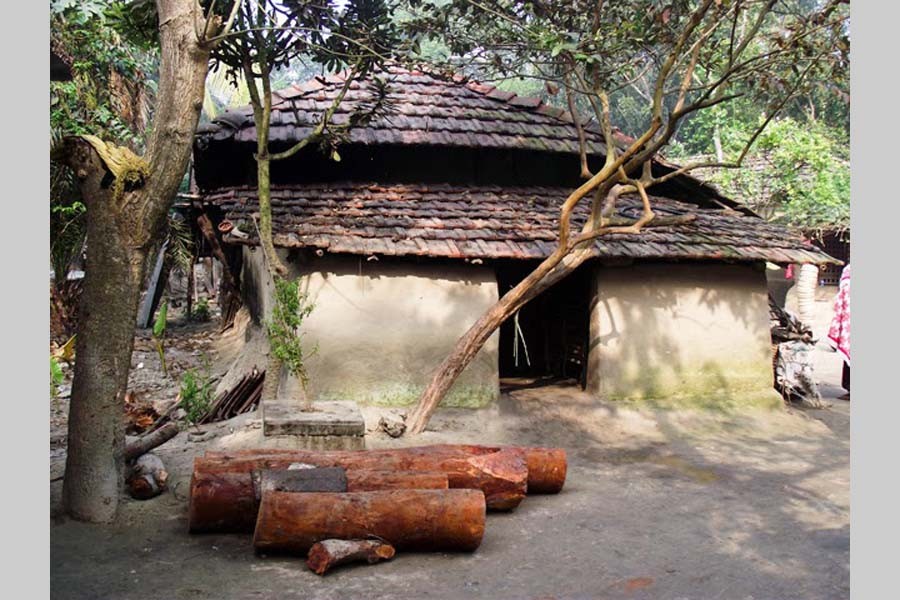Words are making rounds now for sometime about transforming villages in the country into towns. Actually, the issue of taking urban facilities to the doorsteps of villagers figured as a major agenda in the Awami League's election manifesto. Now that the party has formed yet another government, it is only natural that the ministers concerned would return to the subject on occasions appropriate for the purpose.
Now the subject of urbanisation of villages should be put into right perspective. The first question ought to be, is it at all desirable to turn the country into what can be called a supra-urban structure even if there was enough fund for accomplishing the task? Rhetoric most of the time is blind to see the nearest object. People in this part of the world have a knack of talking in terms of hyperbole. They hardly care if they sound credulous.
However, there are people who have their feet on the soil when they delineate with sensitive issues. Deliberating on the issue on Tuesday, the local government, rural development and cooperative minister took an overview of his government's urbanisation programme for villages. Essentially, he has spoken of extending some basic facilities to villages. This sounds right.
The reality is that villages cannot and should not be turned into urban conundrums. People may have to live in a city like Dhaka-which is no more congenial to healthy and peaceful living-out of dire necessity. Those who have a better option certainly do not live here. People in the West have long discovered the virtue of quiet and serene life in villages. Many people travel by train or drive after office or business in London to live in their unpolluted rural hamlets. In neighbouring India also people are accustomed to commuting daily for an hour or two to attend offices or business in Kolkata or other cities. They are better off living in their known rural surrounding.
Why do people prefer village life to urban life? Anyone living in this capital and is compelled to commute regularly through the urban mess knows how reluctantly they have to adapt to the hostile environment. What then goes in favour of a city like Dhaka when the life here is hardly desirable? It is the opportunity of livelihoods. Even an uneducated, unskilled and uninitiated man from a village or a manual labourer can expect some sort of employment if he is clever enough to use his rural connection in the city.
In villages, hardly any such opportunities exist for the surplus labour and least of all for educated youths. So transforming villages into towns can be seen from the point of urban facilities and employment opportunities. When facilities are concerned, power supply by the Rural Electrification Board (REB) comes to the fore. The recent initiative taken for almost instant electric connection is certainly a good indication. Now what matters is uninterrupted power supply. Such a capability is yet to be achieved.
Next comes potable water supply. In Satkhira, a salinity-affected area, an NGO named 'Friendship' has set up six water treatment plants for villagers. The system is working well there. This can be replicated in villages where it is suitable. Perhaps, different types of water supply system will be required for different regions. But this is one vital area of utility services.
Along with water supply, building drainage and sanitation systems for waste disposal will be a major challenge. Without such facilities, though, people cannot lead a decent and civilised life. Creating a network of such facilities in all villages is more difficult than connecting them with the national grid of electricity, internet or cable TV. Already cable TV has made its appearance in many villages and internet is also available selectively. Then villagers' affordability will be a big issue.
Even if all such things are made available in villages, what will be a near outlandish proposition is the setting up of specialised and world class hospitals and medical colleges, universities and research facilities in villages. Road and rail communications have to be improved many times over and when this is done villages will no longer remain village. In a land-scarce country, villagers of the surrounding villages cannot keep such facilities running. So, extensive communication network will be required. When upazila health complexes find it difficult to serve patients well in the absence of physicians and medical equipment, running large and specialised hospitals in village conditions will prove impossible.
However, gradually some select upazila health complexes can be upgraded to hospitals to be attached with medical colleges and those will cater to patients from a few upazilas. Even some well devised and maintained educational institutions like cadet colleges can be set up in rural surrounding. This is how the educational need of villages can be met to some extent. At least enough scope for good education in such facilities should be created so that families do not have to cling to cities in order to educate their children.
Too much urban interference would ruin the peaceful ambience of villages. If a highway runs through a village, it causes more nuisance than a village can afford. Some urban facilities villagers definitely deserve to have but an overdose of which will ruin the bliss of countryside.


